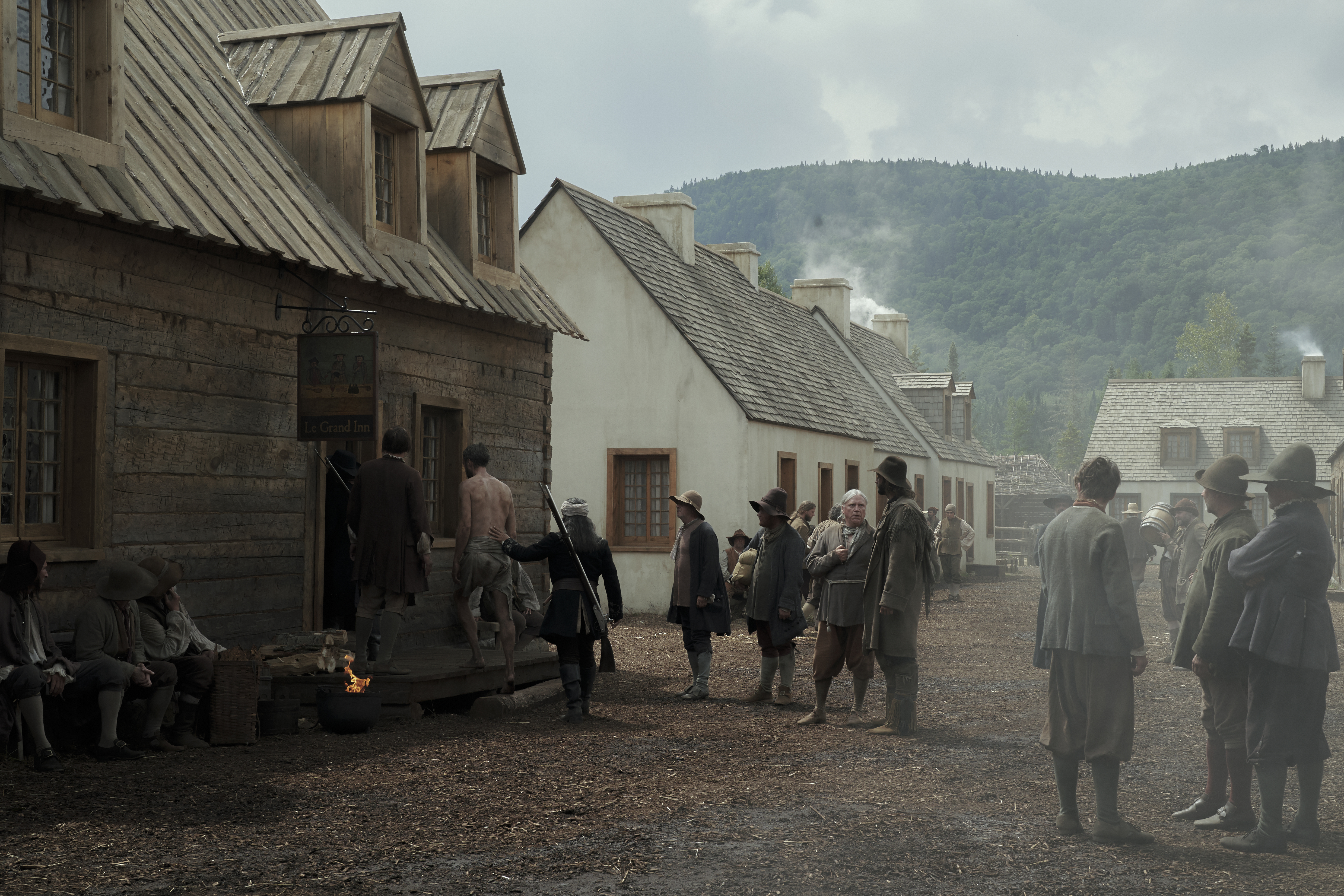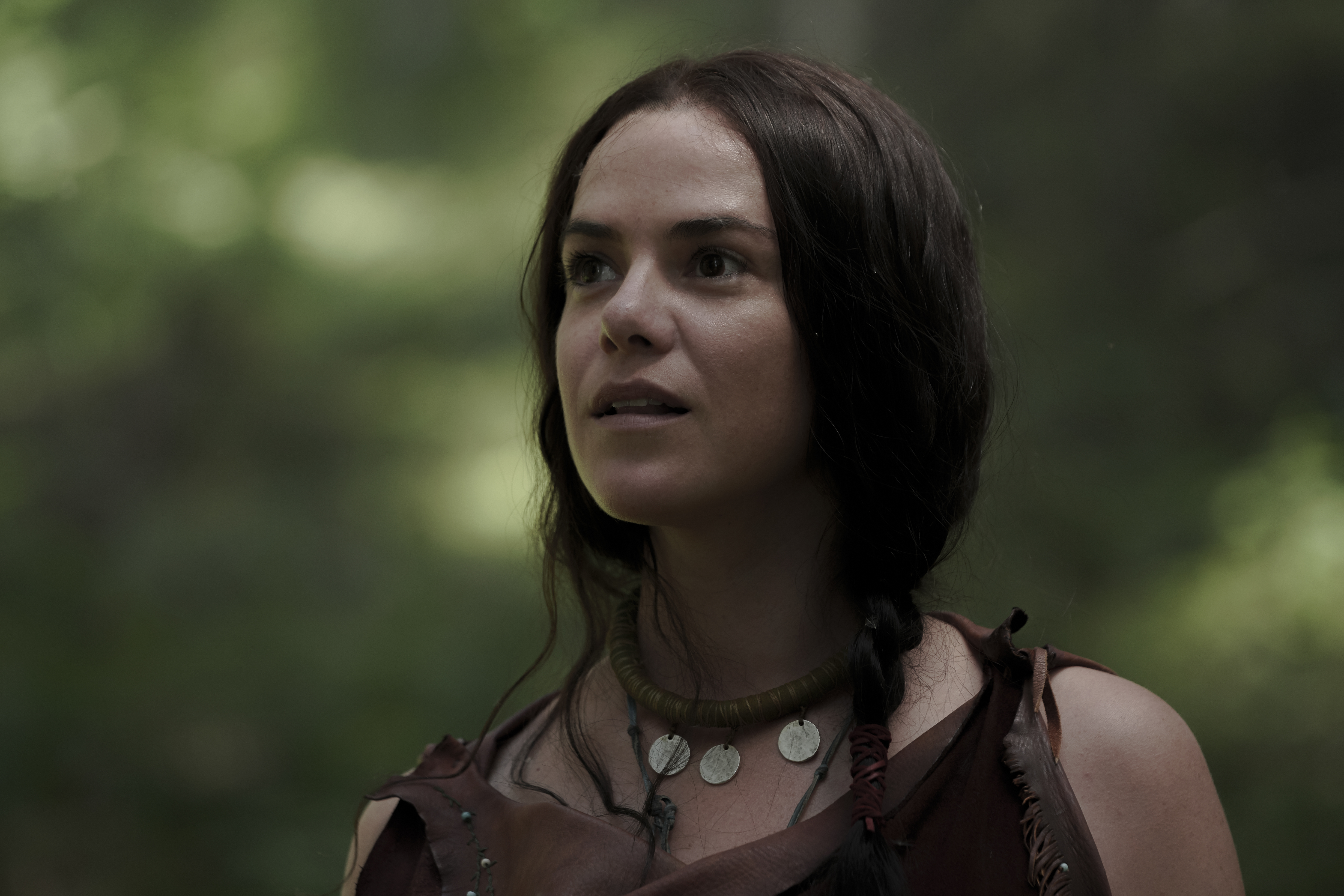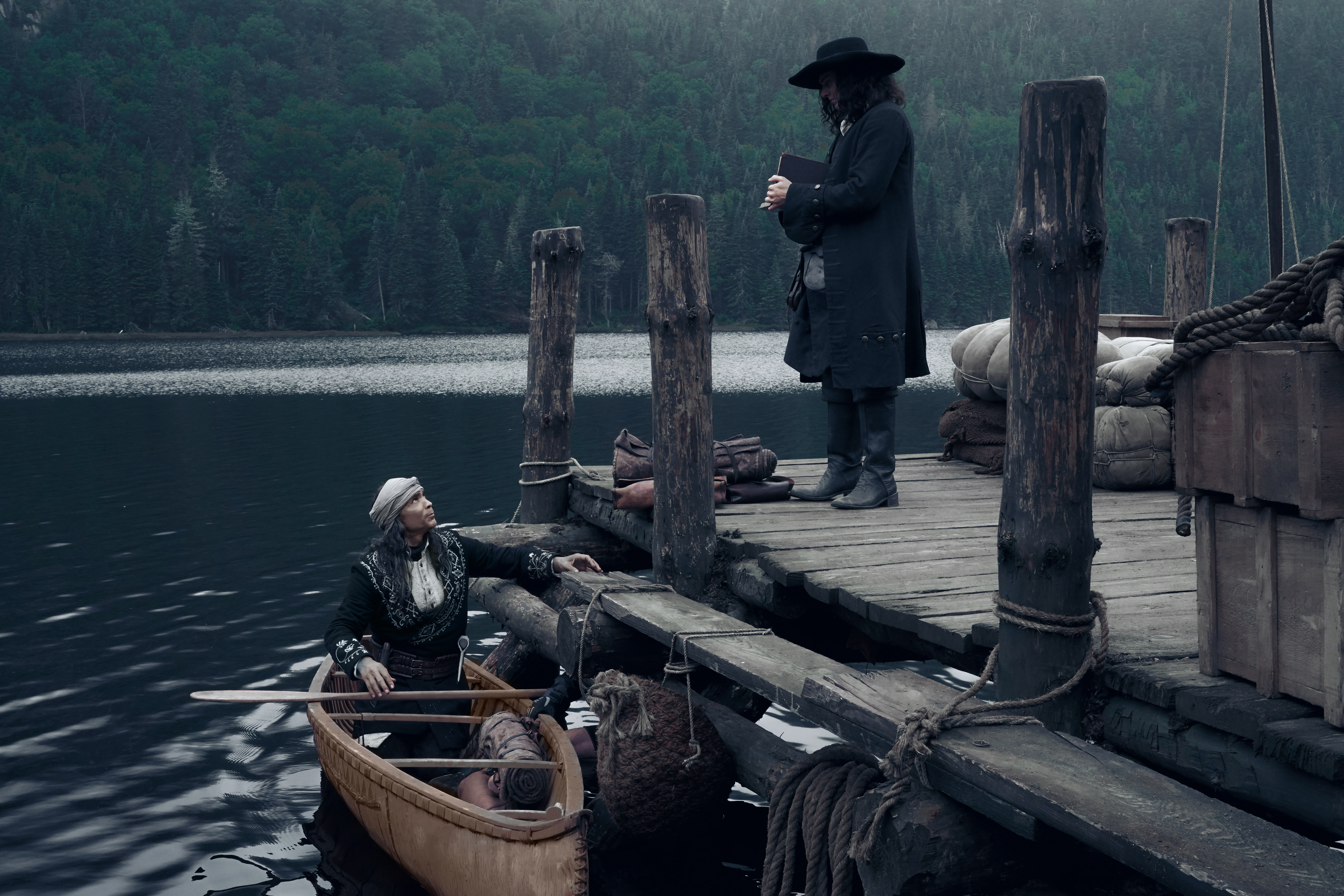Colonial America is an era that’s rich with history that echos to this day. The footholds of British, French, Spanish, Russian, Dutch, and Portuguese colonization and pursuit of ungodly wealth drives everything from the languages we speak to the food we eat to how we still treat Indigenous Americans to the way we treat our environment. It’s ripe territory for storytelling.
Annie Proulx — probably best known for penning Brokeback Mountain — dove deeply into the colonial American well with her much-lauded 2016 book Barkskins. The name is a slang-term for loggers back in the colonial era and logging is at the center of her novel. The story follows 300 years of colonization and deforestation through the eyes of a family of mixed Indigenous and European backgrounds as they fight for survival in an ever-changing world, leading up to the environmental disasters of the present day. Just based on that pitch alone, it’s no wonder that NatGeo jumped at the chance to make it into a TV series.
The reins of the show were given to Elwood Reid (The Bridge, The Chi) who set out to tell the story the right way — with respect for the cultures and people at the heart of it all. Along the way, Reid hired writer Migizi Pensoneau. Pensonseau is from small-town Minnesota and the Ojibwe nation. Pensoneau and other Indigenous consultants were brought in from the jump to assure that this show wouldn’t tokenize Indigenous characters but, instead, add a layer of realism and humanity to the Indigenous roles in the film.
Our conversation with Pensoneau touches on how Barkskins does representation right while also delivering a raw and spellbinding show. It touches on the state of entertainment, how we should expect more truth in our story-telling, and how freakin’ cool it was to work in a functioning late 17th-century village in “New France.”
So, let’s dive into the book first. Had you read the book before getting involved?
I didn’t read the book. I was put in contact with Elwood Reid, who had read some of my stuff. What interested me about the project was that Elwood had already reached out for Native folks’ involvement from step one. He’d already been talking to David Treuer who wrote The Heartbeat of Wounded Knee and had already been in contact with some of the Nation leaders up in Wendake with the Wendat up there.
When he started working on the project he approached the Wendat and asked them, “This is what we’re doing. How can you be involved?” And when I had found all that out and that I wouldn’t have to be the guy to be like, “Hey, we really need Native involvement…” I knew this was something I wanted to be part of. Elwood was just like, “We just need a writer, man. We need an Indigenous voice in the room.” I was like, “Well, let’s get into it.” And then I read the book.
Right. So when you got into the writer’s room, did you feel like there were any barriers to bringing to life Indigenous voices, or were you just trying to break stories?
We were just trying to bring stories, man. For real, I didn’t have to be the Indian authority guy in the room. Everybody was really conscious of what we were doing and they just wanted to tell a good story where everybody’s humanized. Everybody. As we know, Natives have backstories. We made sure that those characters didn’t exist solely as foils to the non-Native folks in the story. They’re just a part of the world. So I just got to sit in, break stories, and hang out and live in this world. And, I think that more people are starting to recognize and to know that — Elwood definitely is — the way people consume content is completely different.
How so?
When people get invested now, they get really invested. I don’t know how many times I’ve said it myself or I’ve heard other people say, “I don’t know, I don’t really want to watch that” or “I don’t really want to get invested in something this big” or something like that. That’s because, I think, people recognize when something doesn’t feel really genuine or like the real deal. They’re smarter in what they choose to watch.
That means you have to be authentic in your storytelling. You can’t half-ass it anymore. You can’t sell short your characters or your story. There’s less room, I think, for something that’s not done in the proper way in terms of representation, or even just in terms of storytelling and characters. You can’t short your audience anymore. There’s a backlash that happens when that happens. People call it out when stories don’t feel true.
I feel that. Let’s look at the story a little bit. The breadth is just massive. The book packs in generations and literal centuries. The first season has a focus on the late 17th century and, what I would call, the chaos of early European colonization. How did it make you feel to characterize and bring emotion to the world of that era?
Oh, it was exhilarating, man. Even writing it, I was loving the characters that we were writing. We had the chance to infuse humor and humanity that I hadn’t really seen in a historical fiction context. For the last 10 years, I’ve been writing with the 1491s [an Indigenous comedy troupe] and have been doing comedy. So it was really important for me to bring real humor to all of this. Then there’s the humanity of these characters. There are a lot of leads, like ten leads. Two of them are Native characters who exist as more than just a proxy for their tribes. They’re just people trying to make their way.
That’s what was really thrilling. I felt comfortable writing within those confines because we were just writing people. I wasn’t writing a documentary about the Wendat story. That’s not something I could do or would feel comfortable doing. We were just writing people trying to get by.

When you’re actually on set and seeing this world come to life, how did that make you feel seeing people in that era who are recreating this world and your words?
I remember one bit of the script that I was helping to shape and the scene work was like, “Oh, it’s an Indian village like we’ve never seen on screen before. A 30, 40-foot tall wall surrounding a camp that’s alive and breathing, and people are living in there.” And I think there was some cynical part of me that was like, “Are we really doing this? Is this really going to be something that we show?” And then I walked through the gates of the Wendat village set and they had given just as much attention to detail as they did to the village of Wobik.
I was like, “Whoa.” It took my breath away. There were these massive longhouses and the people were dressed and looked amazing. We were showing that people actually lived here, worked here, and just trying to get by, man. We also tried to bring in as many Wendat extras as we could to give another layer to the realism. It was also amazing watching them walk in and be like, “Whoa.” This thing had been reconstructed for their people. Those are their structures. They were hearing their language. Seeing these things was … it was literally awesome.
Takes your breath away?
You walk in there and it takes your breath away and it was like that the whole way through. As we started shooting, we had people come out and say some words and put some tobacco down and do a little blessing and ceremony for us. We had the whole crew stop what they’re doing, hundreds of people, and come and listen to the people that have been on that land for thousands of years before our story is told. Having the Wendat come in and welcome us as a crew to tell their story was awe-inspiring.
That sounds like something truly special to be part of, man. I dig what you’re saying about people just trying to get by. I think we try to pull all these big heavy moments from history and look at these big moments as our stories. But, really, it’s the day to day of us just trying to get by that is the story.
Yeah. I think there’s always a lot of pressure, especially because there’s just generally not a lot of representation in terms of Native folks. Almost every time you see some character Indigenous to the Americas, they have to be a representative of all of the tribes, or at the very least the representative of their tribe, or at the very worst a representative of nature. And, thankfully, we didn’t have any of that. These people were just people. It was really cool to write something in that vein.

Did you feel you had to stray from the book to do that?
Annie Proulx’s book is very much about figureheads and they’re representative of an idea. I’m not saying that we threw that aside or anything, but the reason that we stayed back is that we just wanted to focus on the ins and outs of these people at that time. I think if we were to focus on how this is going to affect the future, it wouldn’t work. The effect is inherent because we live in the future and we know. When you see trees leveled in a field or forest, you already get it. So we were just able to stay in the past and focus on the characters that we were living with.
There’s a bit of beauty in that presence. It’s very heartening. It feels positive that this exists.
There were definitely times where you walk onto this giant French village from the 1600s where people are bringing to life some of the work that you wrote and you’re like, “Whoa.” That’s pretty special. Those people are giving respect to the thoughts and ideas we wrote. Hopefully, this is a part of this shift or a trend where if you’re going to tell a story that has Indigenous people in it, you really need to include people that are from the people about whom you are talking.
As an Indigenous writer, what has the show meant to you?
So for me, this was a show where I didn’t have to be Mr. Indian Authority. It was a place where trust and respect were given to me by Elwood, by NatGeo and Fox. It was an incredible experience. I’ve worked hard to come to this point, but it was some of the lessons that I’ve learned traveling around Indian Country with the 1491s that I was able to bring to Barkskins. The show was just on a bigger scale.
When I tour with the 1491s, we go to communities to tell jokes but we also take the time to talk to people when we land. We try to figure out what the world is like there and be respectful of the community we’re in because we’re guests.
With Barkskins, we were able to go into these communities and talk with people and get help from the people who are actually there, whose stories we’re telling. It was an amazing realization of a lot of work I’d done before Barkskins where I’d spent a lot of time in Native communities learning how to be as respectful as possible. To do that on a larger scale that then the whole world can watch was really gratifying.
Barkskins premiered on NatGeo May 25th, 2020, at 9 pm Eastern Time.








